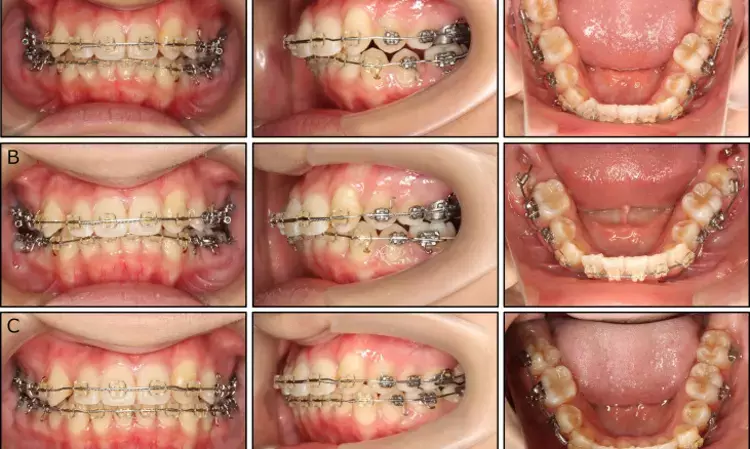- Home
- Medical news & Guidelines
- Anesthesiology
- Cardiology and CTVS
- Critical Care
- Dentistry
- Dermatology
- Diabetes and Endocrinology
- ENT
- Gastroenterology
- Medicine
- Nephrology
- Neurology
- Obstretics-Gynaecology
- Oncology
- Ophthalmology
- Orthopaedics
- Pediatrics-Neonatology
- Psychiatry
- Pulmonology
- Radiology
- Surgery
- Urology
- Laboratory Medicine
- Diet
- Nursing
- Paramedical
- Physiotherapy
- Health news
- Fact Check
- Bone Health Fact Check
- Brain Health Fact Check
- Cancer Related Fact Check
- Child Care Fact Check
- Dental and oral health fact check
- Diabetes and metabolic health fact check
- Diet and Nutrition Fact Check
- Eye and ENT Care Fact Check
- Fitness fact check
- Gut health fact check
- Heart health fact check
- Kidney health fact check
- Medical education fact check
- Men's health fact check
- Respiratory fact check
- Skin and hair care fact check
- Vaccine and Immunization fact check
- Women's health fact check
- AYUSH
- State News
- Andaman and Nicobar Islands
- Andhra Pradesh
- Arunachal Pradesh
- Assam
- Bihar
- Chandigarh
- Chattisgarh
- Dadra and Nagar Haveli
- Daman and Diu
- Delhi
- Goa
- Gujarat
- Haryana
- Himachal Pradesh
- Jammu & Kashmir
- Jharkhand
- Karnataka
- Kerala
- Ladakh
- Lakshadweep
- Madhya Pradesh
- Maharashtra
- Manipur
- Meghalaya
- Mizoram
- Nagaland
- Odisha
- Puducherry
- Punjab
- Rajasthan
- Sikkim
- Tamil Nadu
- Telangana
- Tripura
- Uttar Pradesh
- Uttrakhand
- West Bengal
- Medical Education
- Industry
Bonding of second molars enhances the outcome of non-extraction fixed orthodontic treatment, finds study

Bonding of second molars enhances the outcome of non-extraction fixed orthodontic treatment, finds a study published in the Angle Orthodontist.
A study was done to compare orthodontic treatment (OT) outcomes in adolescents undergoing non-extraction fixed OT with or without bonding of second molars using the score of the American Board of Orthodontics Cast Radiograph Evaluation (C-R-Eval). This study included healthy adolescents with skeletal Class I or mild Class II/Class III malocclusion, normal or deep overbite (OB), and mild-to-moderate dental crowding (<5 mm) who underwent non-extraction fixed OT with (“bonded” group) or without (“not-bonded” group) bonding of second molars. Patient treatment records, pre- and posttreatment digital models, lateral cephalograms, and orthopantomograms were assessed.
The evaluated outcomes included levelling of the curve of Spee (COS), OB, control of incisor mandibular plane angle (IMPA), number of emergency visits (related to poking wires and/or bracket failure of the terminal molar tubes), treatment duration, and C-R-Eval. Treatment variables were compared across time points and among groups. Results: The sample included 30 patients (mean age 16.07 ± 1.80 years) in the bonded group and 32 patients (mean age 15.69 ± 1.86 years) in the not-bonded group. The mean overall C-R-Eval score was significantly higher (P < .001) in the not-bonded group (25.25 ± 3.98) than in the bonded group (17.70 ± 2.97). There were no significant differences in mean changes of COS, OB, IMPA, or treatment duration among groups. The mean number of emergency visits was significantly higher in the bonded (3.3 ± 0.6) than the not-bonded group (1.9 ± 0.4) (P < .001). Bonding of second molars enhances the outcome of non-extraction fixed OT as demonstrated by the C-R-Eval without increasing treatment duration, irrespective of more emergency visits.
Reference:
Fares Alshuraim, Christopher Burns, Darren Morgan, Luay Jabr, Paul Emile Rossouw, Dimitrios Michelogiannakis; The second molar dilemma in orthodontics: to bond or not to bond?. Angle Orthod 2024; doi: https://doi.org/10.2319/071223-487.1
Keywords:
Bonding, second molars, enhances, outcome, nonextraction, fixed, orthodontic treatment, Fares Alshuraim, Christopher Burns, Darren Morgan, Luay Jabr, Paul Emile Rossouw, Dimitrios Michelogiannakis, Bonding of second molars, Cast-radiograph evaluation, Fixed orthodontic treatment, Treatment duration, Treatment outcomes, Angle Orthodontist
Dr. Shravani Dali has completed her BDS from Pravara institute of medical sciences, loni. Following which she extensively worked in the healthcare sector for 2+ years. She has been actively involved in writing blogs in field of health and wellness. Currently she is pursuing her Masters of public health-health administration from Tata institute of social sciences. She can be contacted at editorial@medicaldialogues.in.
Dr Kamal Kant Kohli-MBBS, DTCD- a chest specialist with more than 30 years of practice and a flair for writing clinical articles, Dr Kamal Kant Kohli joined Medical Dialogues as a Chief Editor of Medical News. Besides writing articles, as an editor, he proofreads and verifies all the medical content published on Medical Dialogues including those coming from journals, studies,medical conferences,guidelines etc. Email: drkohli@medicaldialogues.in. Contact no. 011-43720751


